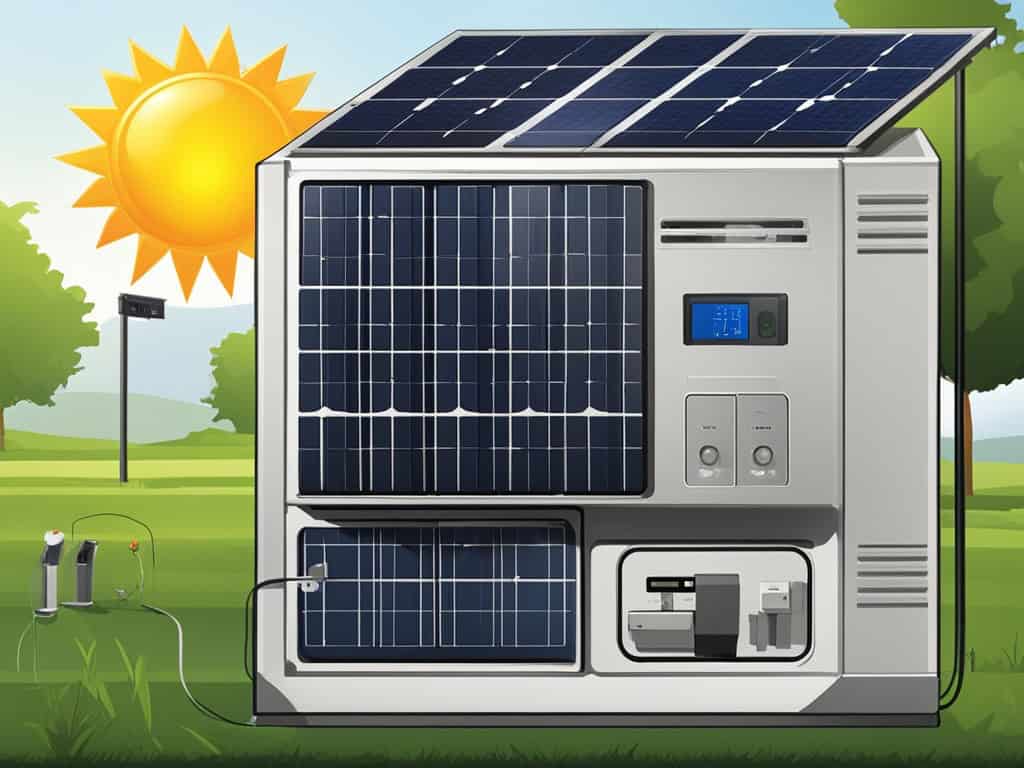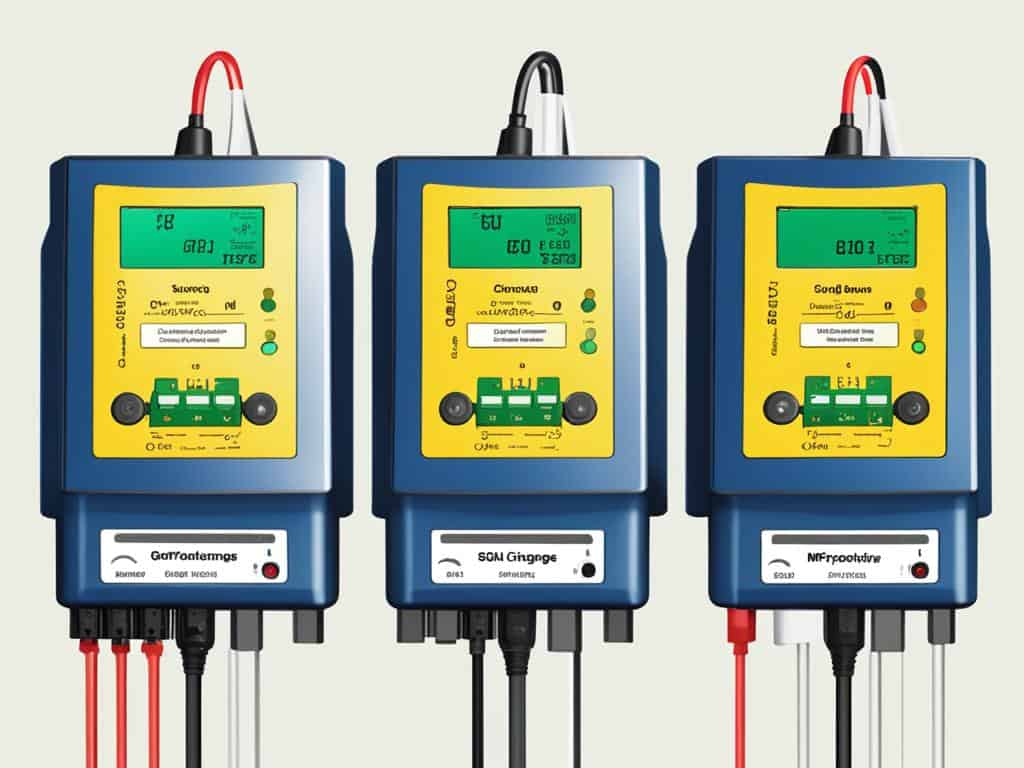How to Convert Normal Inverter to Solar Inverter
How to convert normal inverter to solar inverter – Learn the steps to modify a standard inverter into a solar-powered unit for renewable energy solutions.

Did you know over 60% of Indian homes have inverters for power cuts? Yet, high electricity prices push many to find greener, cheaper solutions. Luckily, you can change your regular inverter into a solar one. This is thanks to new tech like the solar charge controller, making the switch easy.
Converting is smart if you have an inverter or live where power is iffy. It’s a straightforward way to use the sun for energy, cut costs, and help India’s green energy efforts grow.
Key Takeaways:
- Convert your normal inverter into a solar-powered one using a solar charge controller.
- Enjoy cost savings on your electricity bills and extend the life of your solar battery.
- Utilize your existing inverter and avoid the need to purchase a separate solar inverter.
- Fenice Energy offers comprehensive clean energy solutions, including solar, backup systems, and EV charging, backed by over 20 years of experience.
- Explore the benefits of converting your normal inverter to a solar-powered system and contribute to India’s renewable energy goals.
Reasons to Convert Normal Inverter to Solar Inverter
Turning a normal inverter into a solar one helps you save money and welcomes eco-friendly practices. It offers many advantages, making it a smart choice for many. Let’s look at why you might want to make this change.
Reduce Electricity Bills
Solar panels capture sunlight to power your home. This means you rely less on the power grid, cutting your electricity costs. Over time, this adds up to big savings, especially if electricity prices in your area are high.
Utilize Existing Inverter
You don’t need to buy a new solar inverter. Converting your inverter to a solar one lets you keep using what you have. This step avoids the cost of buying a new inverter, making it a budget-friendly choice.
Increase Battery Life
A solar charge controller is added during the conversion. It stops your battery from overcharging, which makes it last longer. This means you won’t need to buy a new battery as often, saving you money.
Fenice Energy has over 20 years of experience in clean energy. Their services include solar, backups, and electric vehicle charging. They make converting to solar simple, efficient, and economical.
Components Required for Conversion
To turn a normal inverter into a solar-powered one, you’ll need solar panels and a solar charge controller. These parts work together to use the sun’s energy. They make your inverter system able to use solar power.
Solar Panels
Solar panels are vital in this setup. They catch sunlight and change it into electricity. The number of panels needed depends on how much energy your home or office uses.
Solar Charge Controller
The solar charge controller is also key. It makes sure the battery doesn’t get too much power and lasts longer. It’s essential for turning your inverter into a solar one and managing power well.
Normal Inverter
Your inverter is the last part you need. With the solar panels and controller, it can work with solar power. This means you can switch to solar without buying a whole new inverter.
Fenice Energy has over 20 years of experience in solar tech. They offer solutions for solar, backups, and EV charging. Their help with inverter changes makes switching to solar easy.

How to Convert Normal Inverter to Solar Inverter
Converting a regular inverter to a solar one is just three main steps. You start by linking solar panels with a solar charge controller. This makes sure the panels can charge the battery and power the inverter well.
Connect Solar Panels to Charge Controller
The solar panels go to the charge controller first. This controller keeps everything in check. It stops overcharging the battery which makes it last longer.
Connect Charge Controller to Inverter
Now, connect the controller to the inverter. The inverter then turns solar energy into usable power for your place.
Configure Inverter Settings
The last step is setting up the inverter. Tweak settings like the charging profile to make everything work best. This ensures your new system is efficient and safe.
By carefully following these steps, your inverter will run on solar power. This cuts down your electricity bill and lets you use clean energy. Fenice Energy is here to help with their vast experience in green solutions.
Types of Solar Charge Controllers
When turning a regular inverter into a solar one, the charge controller is key. There are mainly two kinds:
PWM Charge Controllers
PWM charge controllers use Pulse Width Modulation. They are more affordable and versatile. Perfect for smaller solar systems. They help homeowners and small projects keep costs down.
MPPT Charge Controllers
MPPT charge controllers offer better efficiency but cost more. They can improve solar system efficiency by 25-30%. They’re great for bigger solar set-ups. With MPPT, you make the most of the sunlight, boosting your savings.
| Feature | PWM Charge Controllers | MPPT Charge Controllers |
|---|---|---|
| Price | Lower | Affordable |
| Efficiency | Lower (up to 85-90%) | Higher (up to 95-98%) |
| Suitable System Size | Small-scale | Large-scale |
| Cost Savings | Moderate | Significant |
| Battery Compatibility | Wide range | Specific |

Fenice Energy has over 20 years of experience in clean energy. They provide solar, backup systems, and EV charging solutions.
Normal Inverter
Normal inverters are a common household appliance. Their main job is to change direct current (DC) to alternating current (AC). They have indicators for low battery, solar charging, and eco mode.
They make battery charging faster. And you can see if your load is using the battery, solar, or the grid.
There are different types of normal inverters. You can get off-grid solar, on-grid solar, micro-inverters, and battery backups. This lets people pick what suits their energy needs best.
Knowing what normal inverters can do helps pick the right one for you. For example, going solar can cut your power bills. It also makes the most of what you already have. Plus, it makes your batteries last longer. All of this makes your energy use better for the planet and lighter on your wallet.
Conclusion
Turning a standard inverter into a solar one has many perks. It lets you cut down on power costs and use your inverter better. Adding a solar charge controller can make your solar batteries last longer. It also stops them from overcharging and saves you from buying a new solar inverter. This means you’ll save a lot of money.
Choosing the right solar charge controller is key, though. You need to pick one that works with your current inverter, whether it’s PWM or MPPT. Fenice Energy is a top choice for all things clean energy. They’ve got you covered with solar, backup systems, and EV charging. With over 20 years in the field, their experts can help choose the best solution for you.
Switching your inverter to solar not only helps the planet but also cuts your electricity bill and ensures you have power when you need it. Fenice Energy makes moving to solar easy. Their solutions open up a new world of energy possibilities for your home or business.
FAQ
What are the benefits of converting a normal inverter to a solar inverter?
Converting a normal inverter to a solar one saves money by reducing electricity bills. It makes the best use of your current inverter.
This switch also boosts your solar battery’s life and stops it from overcharging. You won’t have to buy a new solar inverter, which cuts costs.
What components are required to convert a normal inverter to a solar inverter?
To change a regular inverter into a solar one, you’ll need solar panels and a solar charge controller. Solar panels turn sunlight into power. The charge controller keeps the battery from overcharging and makes your inverter work as a solar one.
What are the steps to convert a normal inverter to a solar inverter?
The conversion steps are simple. First, connect solar panels to the charge controller. Then, link the charge controller to your inverter. Finally, set up the inverter to make the most out of solar power and keep your battery charging right.
What are the different types of solar charge controllers?
There are two main solar charge controller types: PWM and MPPT. PWM controllers are cheaper and work well for small solar setups. MPPT controllers cost a bit more but boost efficiency by 25-30% and are better for bigger projects.
What are the key features of a normal inverter?
Normal inverters change direct current (DC) to alternating current (AC). They come with indicators like low battery, solar charging, or eco mode.
They speed up battery charging and clue you in on if the load runs on battery, solar, or main power. They are found in various types, from off-grid to on-grid, depending on your needs.


